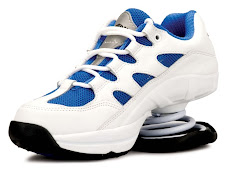Millions of American adults, or one in six, who have foot problems; the ratio increases to one in three over age 65.
1,000
The average number of miles an American walks each year; two to three times total body weight is placed on the big toe during the push-off phase of walking.
1
Million pounds of pressure the feet absorb during an hour of strenuous exercise.
11
Millions of Americans who visit doctors’ offices for foot and ankle problems each year.
25
Percentage of Americans with flat feet, a condition in which the foot does not have a normal arch.
1,000
Number of Americans per year who undergo ankle replacement surgery.
76
Percentage increase in the amount of body-weight pressure on the forefoot when wearing three-inch high heels; this drops to 22 percent for one-inch heels.
.5
The amount of inches between the end of a properly fitted shoe and the longest toe.
10
Percentage of Americans who will be affected by plantar fasciitis at some point in their lifetime.
5,280
Number of feet in a mile.
2,000
Average number of steps in a mile.

1 comment:
According to a study conducted by the university of Ottawa, the average person takes between 19,000 and 22,000 individual steps per day.
The average pressure absorbed by the lower extremity (Sub-talor joint of the foot, posterior tibial tendon, knee flexion, etc.) is about 64 tons. The human body absorbs a tremendous amount of shock and pressure. These pressures result in pain in the pathological body. If the feet are not properly supported, allowed to function in their normal ranges of motion and alignment, those pressures result in abnormal wear and tear of the joints. Therefore, hard surfaces alone are not totally responsible for the high numbers of knee and hip replacements. The other half of the story is biomechanical dysfunction of the feet (primarily).
Without fixing the source of the problem - the feet - shock absorption is merely a band-aid. Were it not for the 3/4 length orthotic attached to the Z-Coil they would be an utter failure. Statistically only about 30% of the population achieve proper correction of pathomechanical foot problems with over-the-counter orthotics. The other 70% require additional modifications or "custom" orthotics (That is, functional foot orthotics which are fabricated for the patient.) Z-Coil is hugely successful largely because of the shock absorption combined with a "standard" orthotic. However, it would be more beneficial, dealers would see a huge increase in physician referrals, if proper training were instituted to make these a custom orthotic. The medical advantages of Z-Coil are recognized, phenomenal. Were it only possible to make them better by the average dealer!
Post a Comment